Grimsby, Lincolnshire
Up to 1834
In 1802, Grimsby erected a "House of Industry" for 100 inmates on Brighowgate. The building formed three sides of a square, with outhouses on part of the fourth or east side The House had a treadmill operated by four men, which was used to grind corn for use by the inmates. It also ground bones for manure, worked a circular saw, and turned a grindstone. According to Bates (1893), the treadmill also featured in a crime committed by a matron of the House who, under the influence of jealousy, committed a gross assault on an inmate, for which she was prosecuted. The victim was attacked "by binding her to the treadmill in the dead of night, tearing off her gown, loosing her stays, blindfolding her, and tying-up her mouth; then with a bunch of oisiers flogging her on the shoulders and all her back parts until the ends of the oisiers split in pieces, and afterwards repeated her flogging with a single tough stick until the parts flogged were black with diffused blood beneath her skin." The jealous matron received four months imprisonment for her vicious conduct.
After 1834
After 1836, Grimsby was part of the Caistor Poor Law Union. In 1890, increasing population in the area led to the formation of a separate Grimsby Poor Law Union. It included the parishes of: Ashby cum Fenby, Aylesby, Barnoldby-le-Beck, Beelsby, Bradley, Brigsley, Clee, Cleethorpes, East Ravendale, Great Coates, Great Grimsby, Habrough, Hatcliffe, Hawerby cum Beesby, Healing, Humberston, Immingham, Irby, Laceby, Little Coates, Scartho, Stallingborough, Waltham, and West Ravendale.
A workhouse and infirmary for the new Union were built at a ten-acre site on the west side of Scartho Road to the south of Grimsby. The land was purchased from Lord Yarborough for the sum of £1,600.
The new buildings were opened on 9th October 1894 by the Right Honourable J Shaw-Le-Fevre. The architect was HC Scaping whose designs were based on a pavilion plan with a number of separate blocks for the administration and the various classes of inmate. The site layout can be seen on the 1905 OS map below.
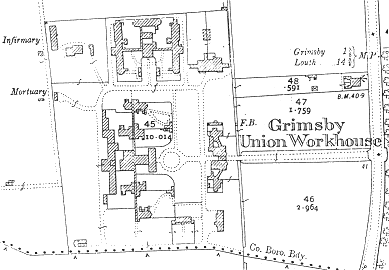
The workhouse gates at the east led to a long drive up to the entrance block.
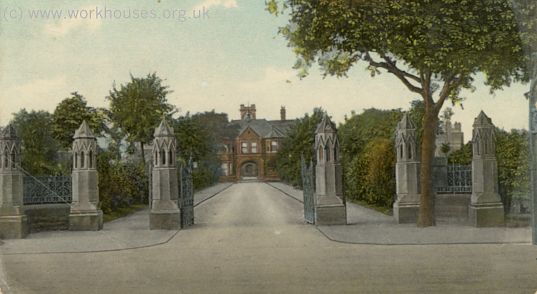
Grimsby entrance gates, 1908.
© Peter Higginbotham.
The arched entrance block included a board room, porter's lodge, waiting room and clothes store, with male and female receiving wards to the rear. Foundation stones at the front of the building are dated 13th October 1892.
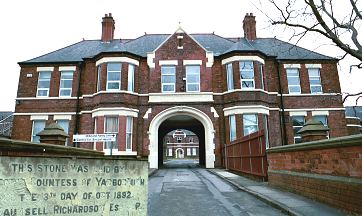
Grimsby entrance block from the east, 2001.
© Peter Higginbotham.
The main group of buildings centred around a two-storeyed administration block which contained the Master and Matron's accommodation and offices, with a dining-hall at the rear seating 164. The women's pavilions stood to the north, and men's to the south. The outer of these were for the aged and infirm. The inner pavilions accommodated able-bodied inmates on the western side, and 'imbeciles' on the east.

Grimsby workhouse buildings from the north-east, 2001.
© Peter Higginbotham.
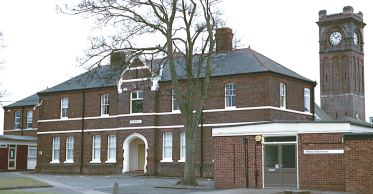
Grimsby administrative block from the east, 2001.
© Peter Higginbotham.
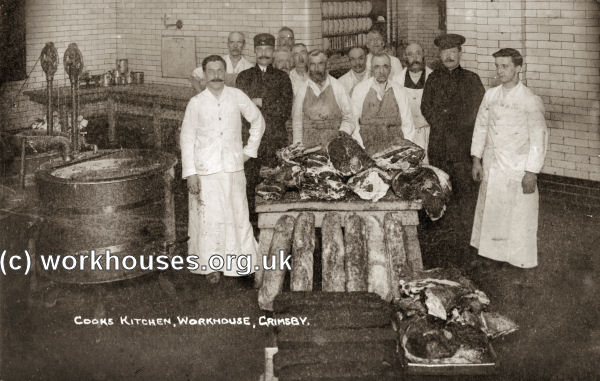
Grimsby workhouse kitchen, 1912.
© Peter Higginbotham.
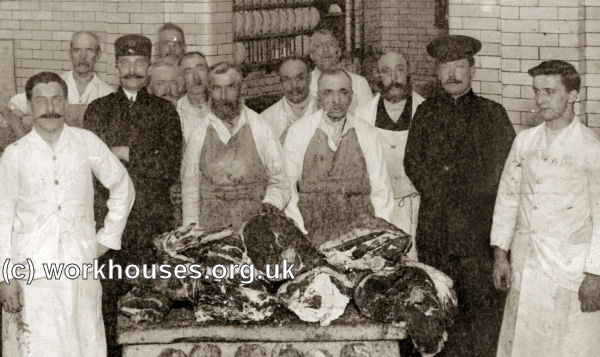
Grimsby workhouse kitchen (detail), 1912.
© Peter Higginbotham.
At the north of the site stood a large infirmary which comprised a dispensary and nurses home at the centre, with male wards to the east and female to the west. A separate infectious block stood to the west of the infirmary. To the east of the infirmary was a three-storey children's block which could accommodate forty boys, thirty girls and sixteen infants.
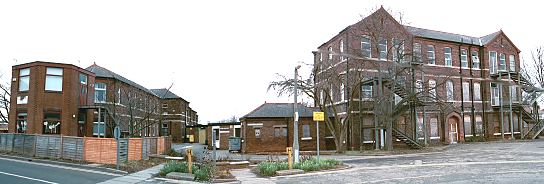
Grimsby male infirmary wards and children's block from the south, 2001.
© Peter Higginbotham.
In 1895, the union received nationwide publicity over a scandal in which boys at the workhouse had been mistreated. An account of the inquiry into the matter is given on a separate page.
Following the Local Government Act of 1929, the workhouse came under the control of Grimsby Town Council's Public Assistance Committee and was renamed Scartho Road Institution. After the introduction of the National Health Act in 1948 it became a general hospital. For many years it was known as Grimsby District General Hospital. Following the erection of the new Princess of Wales' hospital to the south of the site, a number of the former workhouse buildings have been demolished or stand empty. Others are still used for administrative or ancillary services.
Grimsby Union School
In 1913, the union opened a children's residential school on Brighowgate. It could accommodate 160 children.
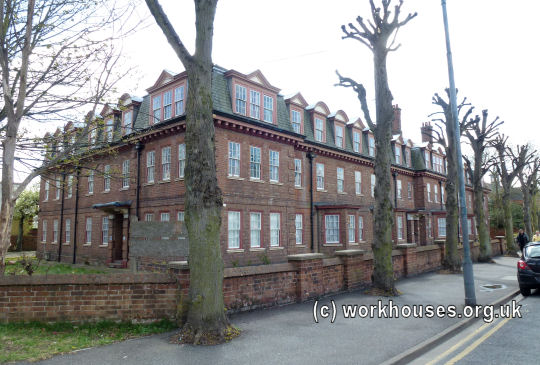
Grimsby Union School from the north, 2013.
© Peter Higginbotham.
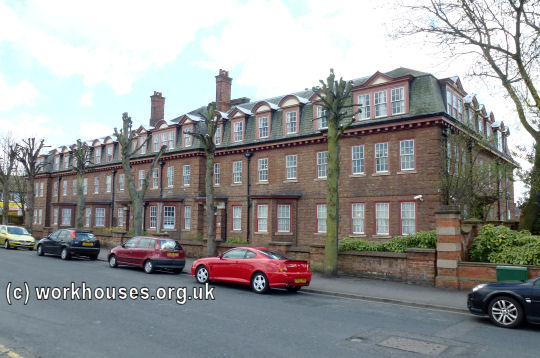
Grimsby Union School from the west, 2013.
© Peter Higginbotham.
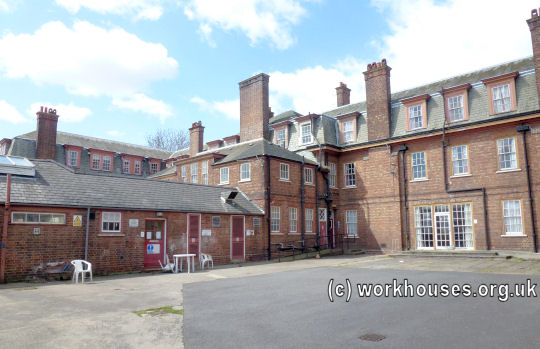
Grimsby Union School from the west, 2013.
© Peter Higginbotham.
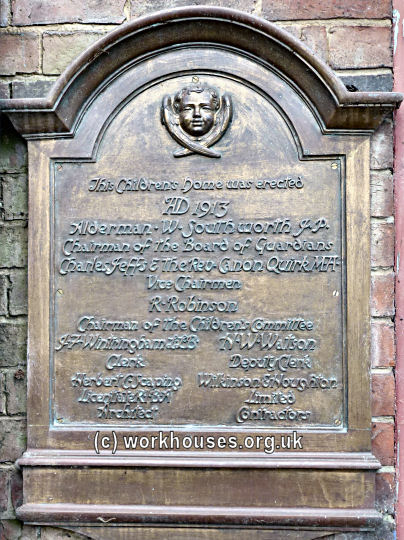
Grimsby Union School commemorative plaque, 2013.
© Peter Higginbotham.
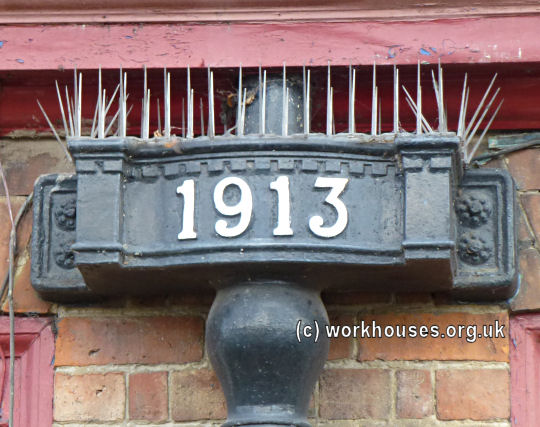
Grimsby Union School drain-pipe, 2013.
© Peter Higginbotham.
With the onset of the First World War, the premises were first used for billeting troops and then and as a hospital in connection with the Humber Defence Force. The building later became a Salvation Army social centre and hostel.
Records
Note: many repositories impose a closure period of up to 100 years for records identifying individuals. Before travelling a long distance, always check that the records you want to consult will be available.
- North East Lincolnshire Archives, Town Hall, Town Hall Square, Grimsby, DN31 1HX. Holdings include: Master's report books (1919-29); Births (1895-1903, 1914-53); Deaths (1894-56); Creed registers (1910-51); etc.
Bibliography
- Bates, Anderson (1893) A Gossip about Old Grimsby.
- Beal, Sadie (1983) A Nostalgic Recollection of Scartho Road Institution.
Links
- None.
Unless otherwise indicated, this page () is copyright Peter Higginbotham. Contents may not be reproduced without permission.


